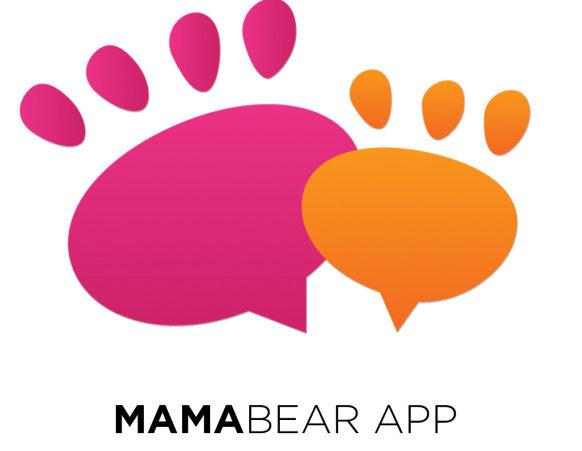When you can’t get your kids to stop texting at dinner, technology seems more foe than friend. But if you think new technology only widens the gap between you and your kids, think again—a variety of apps, some a few years old and some brand new, give parents excellent tools to build trust with their kids while also keeping them safe online.
If this idea sounds too good to be true, scroll through the apps below. Each one is a prime example of technology that protects kids while fostering healthy parent-child relationships. Whether you worry about your kids’ Google searches and social media connections or the potential for cyberbullying and sexts, there’s an app—or several—on this list for you.
Bark subscribes to the belief that the Internet is a helpful tool, but it also knows parents want to (and should) play an active role in teaching their children to stay safe online. To help you achieve this goal, Bark monitors your child’s social media accounts and texts, and then it sends you real-time alerts when it notices concerning content:
- Cyberbullying
- Sexting
- Signs of depression or suicidality
- Drug-related content
Bark also gives tips on how to address these issues with your kids. For instance, if Bark notices your child posting personal information (like birthdates or phone numbers) to public forums, it can give you specific advice on how to bring up the topic with your child, explain its importance, and modify the behavior.
Bark is available on iOS and Android. It costs $9 a month with no limit on features, technical support, or the number of kids you can add. Alternatively, sign up for a whole year to enjoy one free month.
Life360 protects your family by connecting every member. It operates on three basic principles:
- Connection. Add circles that include family members, close family friends, and/or caregivers, and keep locations and messages private.
- Communication. Use the group chat feature or send private messages instead of spending money on texts.
- Simplification. Make life easier by automating location check-ins and enjoy a streamlined, easy-to-use dashboard.
The app is free for both Android and iOS.
Life360 also produces two versions of the app that give families greater peace of mind: Life360 Plus and Life360 Driver Protect. With Life360 Plus, you get the same features as Life360, along with features like 30-day location histories, crime alerts, and the ability to add more locations where family members and friends can check in.
The Driver Protect app is perfect for parents of teens who just learned to drive. It analyzes family members’ driving habits and provides safety tips, detects accidents, contacts emergency services, and offers round-the-clock roadside assistance.
Do you want an all-in-one app that gives you the features you need not only to protect your children, but also to parent them in a complex world? MamaBear is your solution. This app offers an array of tools that let you ensure your kids are safe online, while they drive, and whenever they’re out of the house:
- Family news and location sharing connects everyone in your family quickly, easily, and securely.
- Speeding alerts tell you if your kids are driving over the speed limit you’ve set for them.
- Text and social media monitoring let you check your kids’ posts and messages.
- “Call mama,” “call for help,” and “come get me” buttons on your child’s phone make it easy for kids to contact you in an emergency.
With alerts that let you know when your child arrives at home and who he or she adds on Facebook, it’s no wonder the app has won numerous awards and recognitions from groups like TechCrunch and the Kauffman Institute.
MamaBear accounts are free and available on iTunes and Google Play.
Net Nanny has been winning awards from software companies and receiving stellar reviews from parents for more than ten years. This comprehensive program gives you complete control over who can access what content on the Internet. Tailor the filters and settings for each member of the family to block content like profanity and pornography, and enable social media monitoring to check for sexual content and cyberbullying.
With features that let you manage your child’s settings and access usage reports from any web-enabled device, Net Nanny is incredibly easy to use. The dashboard shows which websites the program blocked each week, how often a website was blocked, and what type of content blocked sites contained.
Net Nanny doesn’t just keep your family safe online, though. It also teaches personal accountability and responsible time management by letting you block out certain times for Internet use. The newsletter and blog include great tips for parents on how to talk to kids about online safety.
PocketGuardian scrolls through texts, direct messages, social media posts, notes, and photos on your child’s apps and notifies you if it notices cyberbullying-related content, sexually explicit imagery, or sexts. The app doesn’t work by pinging certain keywords. Instead, it analyzes the context and language of a post to assess the issue.
PocketGuardian aims to foster a trusting relationship between you and your teens, so it doesn’t send you a screenshot of the message, photo, or text it flagged as problematic. Instead, it sends you a timestamp, a description of the type of activity it noticed, and the resources and information you need to have a productive conversation with your child.
The app comes with a few other helpful tools:
- Device location tracking
- Access to browser history
- Access to incoming and outgoing call history
Both the PocketGuardian Basic and PocketGuardian Plus plans come with a free 30-day trial and work for iOS and Android.
TeenSafe was created by parents for parents who want their teens to feel safe and happy online, at school, and at home. It offers several useful ways to protect children from cyberbullying, sexting, and identity theft:
- See any deleted, received, and sent text messages
- See incoming and outgoing calls
- See your teen’s phone’s location and location history
- Scroll through your teen’s web history
- View all apps installed on your teen’s device
- Check out your teen’s contact lists
You can also choose from two apps depending on your needs: TeenSafe Monitor lets you view your teen’s texts and messages on your own phone, and TeenSafe Control lets you set restrictions on your teen’s phone use, including blocking apps and preventing texting while driving.
TeenSafe’s website also has helpful resources for parents, including blogs about how to make TeenSafe work for you and your children and a free guide on tech safety. TeenSafe recommends that you let your kids know you’ve downloaded the app and to have a long conversation about how you’ll use it.
Instead of handing off your tablet to your child and hoping they use the time wisely, invest in Zoodles. This app was made for parents who want to integrate technology into educating younger children without putting them in unsafe environments.
Based on the age and learning-level settings you choose, Zoodles controls which websites kids can access. Your kids can then watch videos, play educational games, and read interactive books—all of which are thoroughly vetted by Zoodles.
The app also tells parents how much time kids spend on each site and with different subjects so you can promote subjects like math, science, reading, and life skills. Zoodles is also perfectly affordable: enjoy the free version, or subscribe to the premium version for a monthly fee of $7.95 or annual cost at $59.95.
Do you have experiences with any of the above apps? What conversations have you and your teens had about Internet safety, and how has this helped your relationship? Feel free to share in the comments below—we’d love to learn from you!




